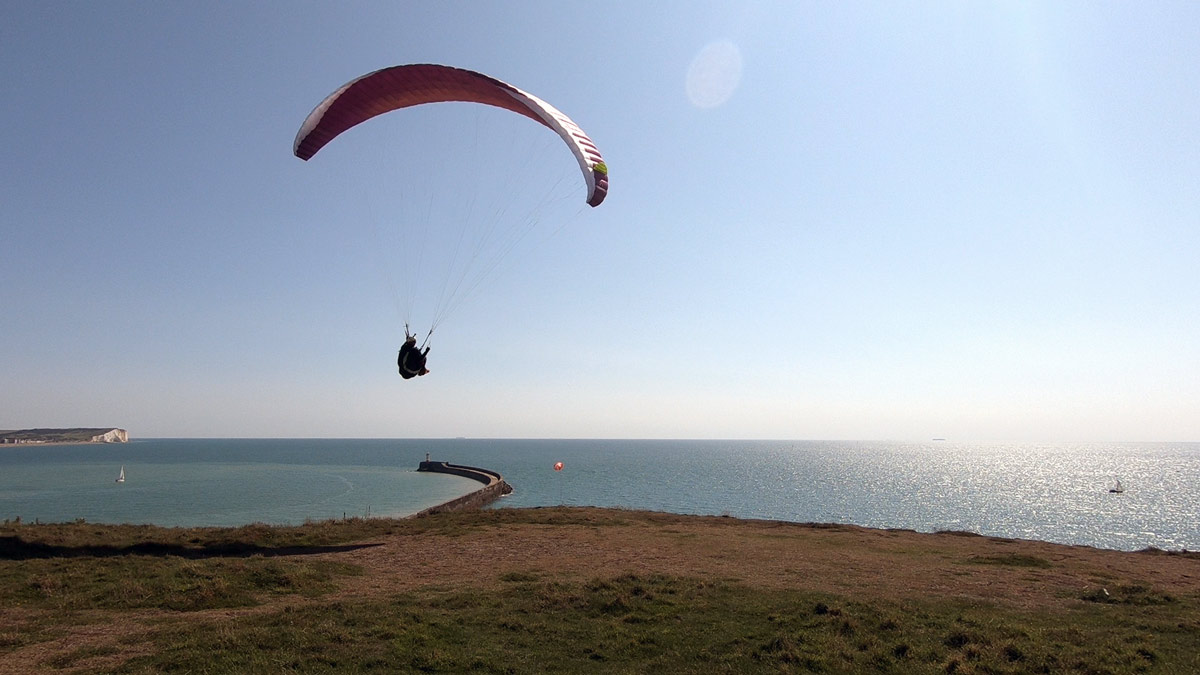
A good pilot knows where the wind comes from. Always! The wind direction determines your flight path, it dictates where the turbulence areas are, and it reduces your landing speed to survivable levels (if you’re smart enough to line up your landing into wind). Let’s explore air speed, wind speed and ground speed to clear up one of the hardest concepts in freeflight.
We kick this one off with a video where we display the concepts at work. We’ll expand the ideas with some technical diagrams to help you understand the different ways this concept plays out during your flight.
Flying into wind
When landing, you have a simple vector diagram. You probably want to be a bit faster than 24kph airspeed, but it is technically possible to achieve (just before the wing stalls) and it highlights how slow your groundspeed can become if you point into wind. So on landing flare you’re moving forward at 24kph but while you do so the headwind moves you back at let’s say 19kph. The result is a groundspeed of only 5kph. Walking speed. Another safe landing!

Flying down wind
When flying, begin with your airspeed, because it is the one under your control, and is usually fixed at around 38kph (trim speed) or very close. For simplicity, we ignore the effects of altitude, temperature, pressure and humidity (which will impact that speed slightly). So if you move straight ahead at 38kph through the air, and that air is moving in the same direction, the vectors will be simply added together to get a groundspeed of 57kph. Downwind! You can’t land this way!

Flying across the wind
When soaring along a ridge with a crossed tailwind (as in the video), we get something like the diagram below. 38kph ahead, and 19kph at a 45 degree angle from behind which will shift you against the ridge line on a track of roughly 53kph (I’ve used simple graphical measurement here).
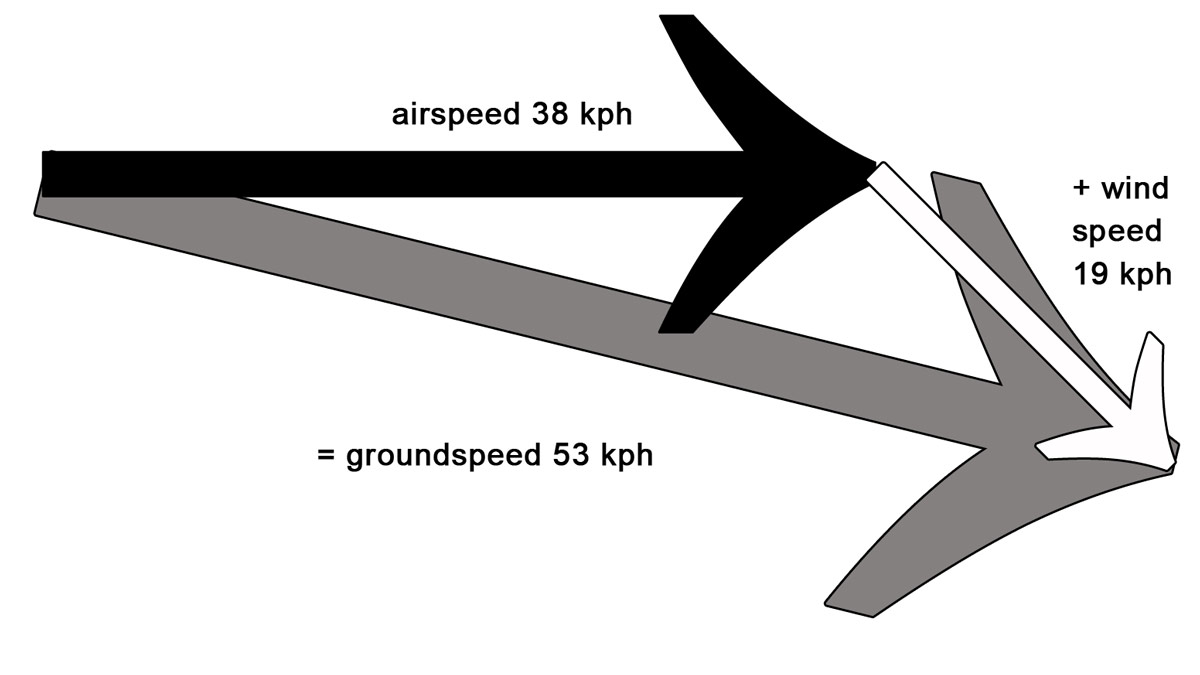
If you are pointing perfectly across the wind direction with your toes, you will be pushed sideways with the wind and will have a resultant groundspeed of 42.5km/h (faster than trim speed).
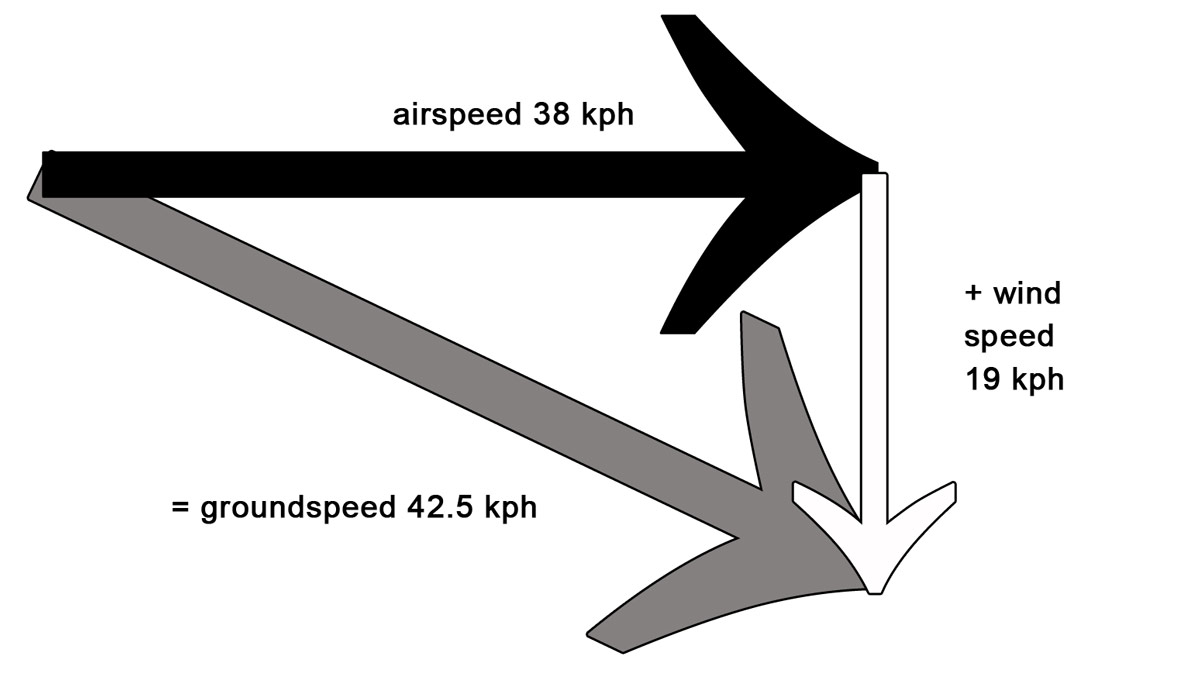
Finally, if there’s a 45 degree headwind, you’ll be pushed off course and your groundspeed will be reduced to 28kph. These numbers don't add up until you consider the direction of movement.
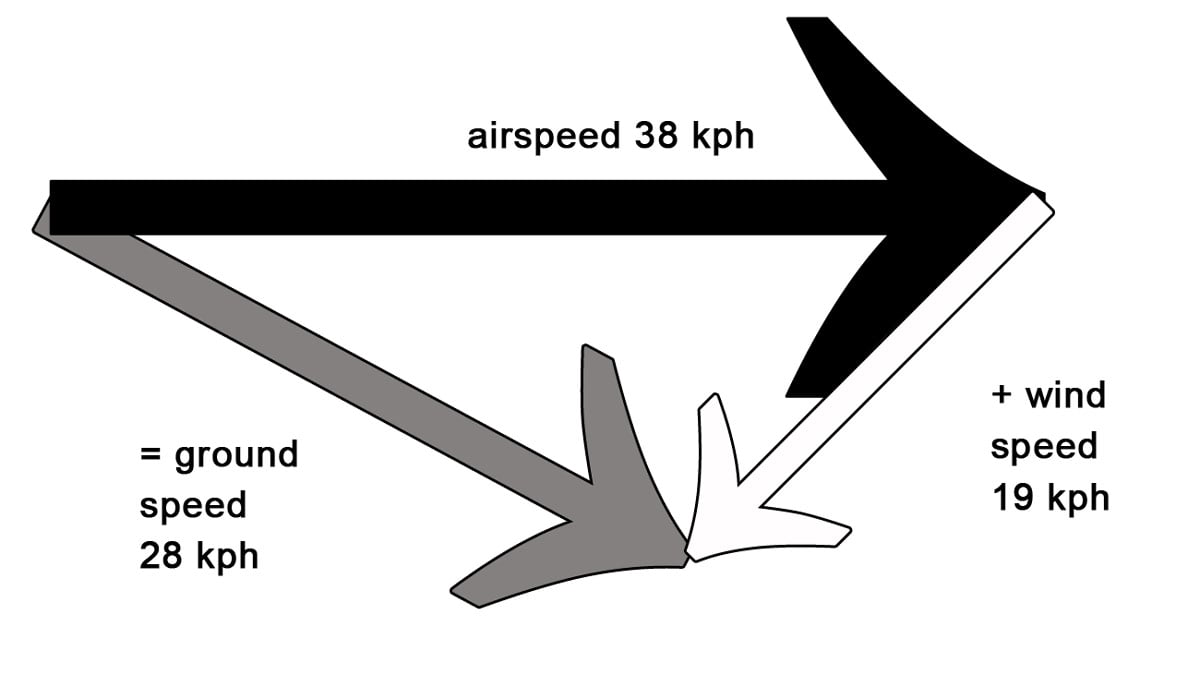
Wind indicators
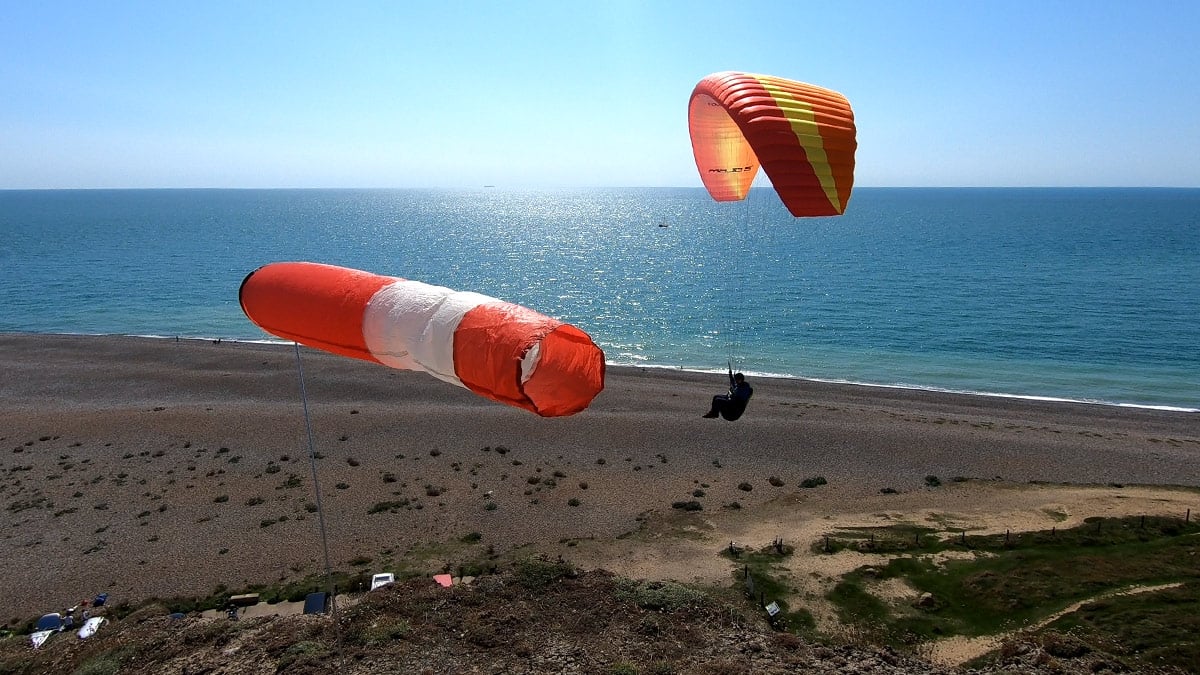
Many modern flight instruments will show you your groundspeed and ground track (heading). From this you can easily deduce the wind speed and direction, because you know your trim speed is relatively constant at 38kph, and you can see which way your toes are pointing.
The ‘wind direction’ calculated by flight instruments is often inaccurate because it presently requires steady 360 turns to calculate the wind drift – pilots often don’t fly in this pattern in soaring conditions or when setting up to land. Rather look out for ripples on water, dust, smoke and flags.
What’s the wind direction?

You want the wind to be coming straight up on the slope you’re going to be flying on. Use a windsock. Move so that you can see through the tail of the windsock, then you are looking straight into wind.
If you don’t have a windsock, turn your head from side to side until the wind noise is balanced in both ears.
Air speed
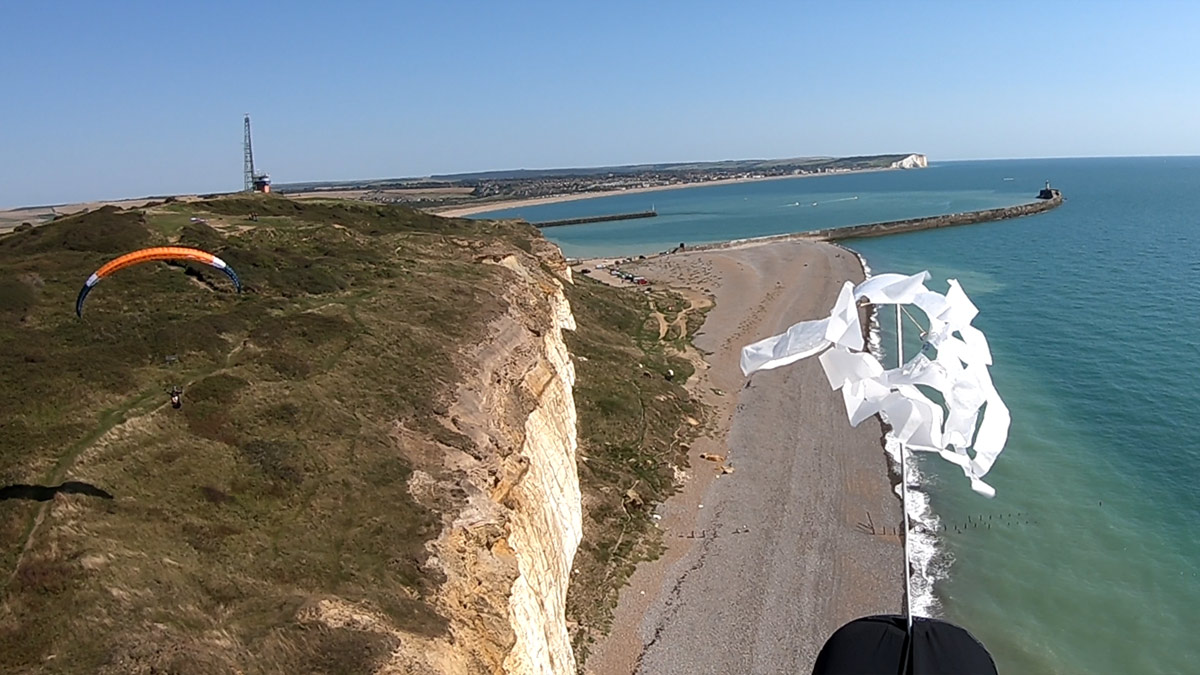
When you’re flying the paraglider you will feel wind in your face because you’re moving through the air. You will always be pointing into this relative wind, if your wing is still flying. If you’re not feeling this wind in your face, put your hands up because you’re stalling your wing.
Ground speed

Your airspeed and direction + the movement of the air that you are flying through (wind) = your track over the ground.
It doesn’t matter whether you’re pointing downwind, upwind, crosswind, sidewind, your airspeed at trim (hands up) doesn’t change. Your ground speed will change but you won’t feel it. You can’t feel the difference when you swing around and turn ‘into wind’.
So watch your shadow (or the ground nearby) to build up experience of your trim speed and what upwind and downwind looks like. This can be very useful when you’re coming in to land.
The effect of wind speed
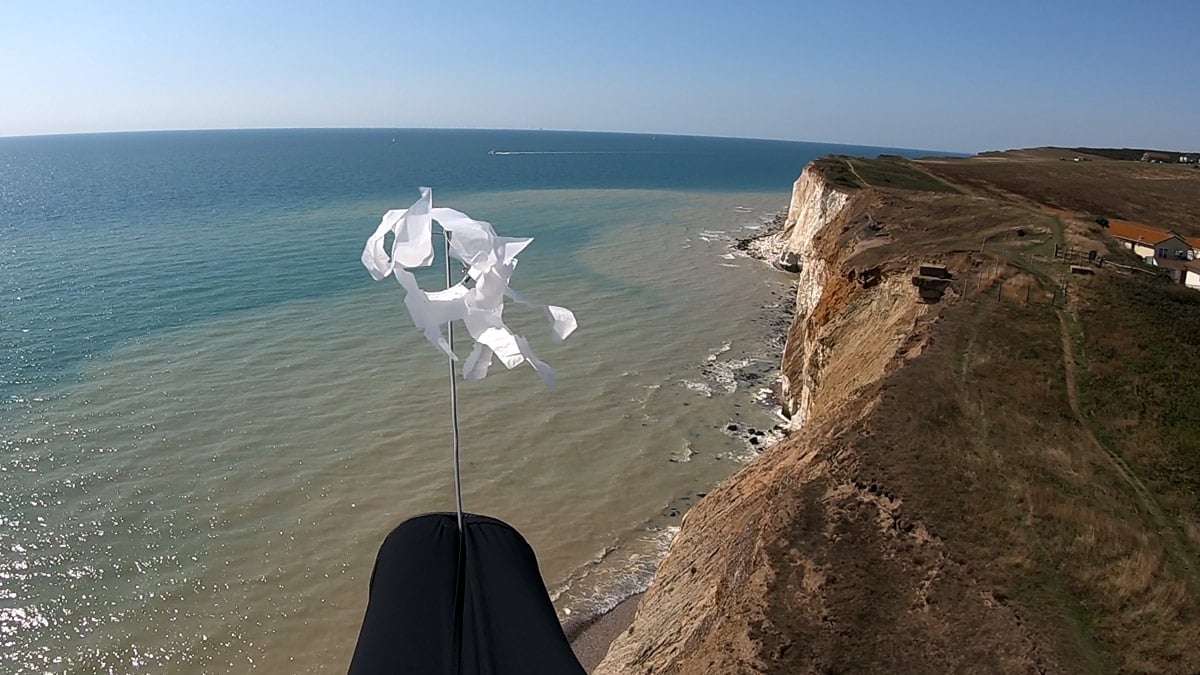
You can’t point your toes straight along a soaring ridge because the wind will push you over. Fly at a slight angle, and if the wind increases, increase the angle.
If you get higher, the wind is stronger, or it’s turned more directly onto the ridge (or the sun has come out and thermals are forming!).
If the true wind is blowing across the ridge (more than 45 degrees off perpendicular) the lift will be greatly reduced and the air will be full of turbulence. The way to get higher on such a ridge is to find the piece of ridge angled perpendicular to the wind where the air is getting scooped up the most.
Be really careful of going downwind close to the ground. One ridge soaring beat will usually have a slight downwind component to it – try to give yourself extra clearance during this run.
How to work out the wind direction from the air

Fly in one direction, look at your ground speed and any signs of drift (your toes pointing one way but your shadow is shifting to one side or the other). Do a 90 degree turn. Again look at ground speed and drift. That’s enough to work out which way the wind is coming from. Turn into wind, you can confirm it: your ground speed is slowest. Congratulations, another safe landing!
Brought to you by Flybubble
Like what we do? The best way to thank and support us is to buy gear from us and recommend us to others. Review our service on Trustpilot and our products on Flybubble Shop. You can also subscribe to Flybubble Patreon. Thank you!

